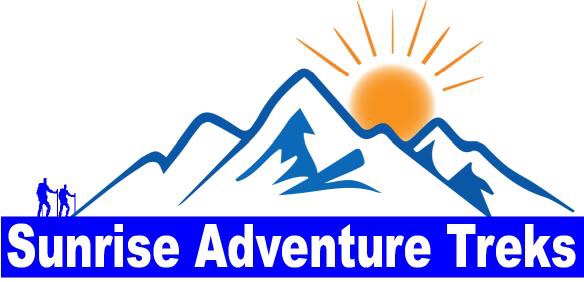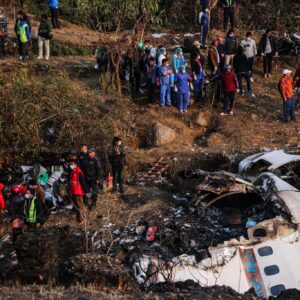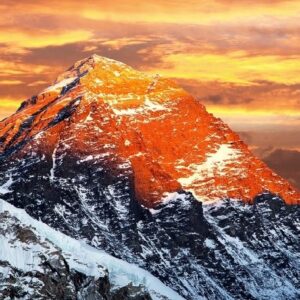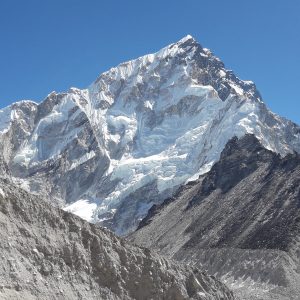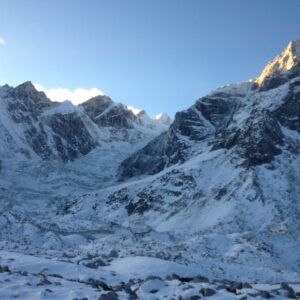
Top 20 Things to Do in Nepal | Attraction of Nepal | Activities in Nepal
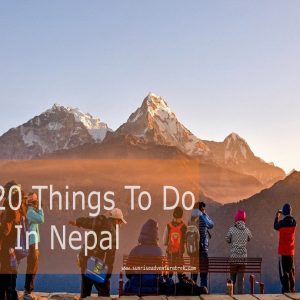 24 Sep, 2024
24 Sep, 2024
Earthquake of 2015 drastically changed the economy of Nepal. At the time, news media overly stretched the disaster resembling some type of massive annihilation. Though the loss of lives and fallen homes in villages and children staying outside without any proper sanitation can’t be ignored; it is a fact that only 2% of the tourism sites were affected by the disaster. This information really dried up the tourism industry for the year, but now it is progressing gradually.
If you want to visit Nepal, read the article to know what you can do once you are here (Nepal is now completely safe to visit). (Top 20 things to do in Nepal)
1. Trekking
Trekking is one of the most popular adventurous activities in Nepal because it houses many hiking sites including Everest region, Annapurna Region, Langtang Region, and many others. All the regions offer sights of world-famous peaks in one form or another & the most fascinating part is; the higher altitude you cover, the greater the Himalayan views you get and the more challenging and difficult it becomes.
For accommodation, most of the short trekking routes have lodges or hotels, but for longer & high altitude treks, you either have to use Tea-houses or stay in tents. There are more than a hundred trekking routes to choose from, ensuring you don’t get bored and can customize or choose routes that best match your preference. The huge option of routes means anyone can enjoy Nepal. Your trip varies based on your time and budget.
How to Prepare for Trekking in Nepal:
High altitude trekking is correlated with fewer facilities and more challenges. However, the village people offer great hospitality & you can enjoy amazing landscapes, which you will remember forever. Trekking is a must-do in Nepal. Some popular treks include Everest Base Camp Trek, Annapurna Base Camp Trek & Ghorepani Poonhill Trek. For more secluded areas like Upper Mustang Trek, Manaslu Trek, Dolpo Trek, etc., you need a special permit, and they are more expensive compared to other major trekking routes.
2. Expedition
If you want to take part in the more adventurous side of Nepal, nothing can kill your hunger better than the Expedition. Since the first successful summit of Everest in May 1953 by Tenzing Norgay Sherpa & Sir Edmund Hillary, climbers around the world are rushing to ascend the peak. You too can climb Everest, but you need a series of experience and training before attempting the peak.
If you are on a mission to summit Everest someday, you can start by climbing small trekking peaks (above 6000m) and increasing your level & experience slowly. The main task here is to acclimatize your physique with altitude because it is the main cause of death during the expedition. This slow & steady adaptation to high altitude increases your chance of summiting Everest.
Besides, you can take the plunge in climbing famous trekking peaks like Island Peak, Mera Peak, Yala Peak & Pisang Peak, to name a few. These are challenging for first-timers, and once you ascend these peaks, you can challenge yourself to climb the top ten world’s highest peaks. Good luck.
Recommended Top 10 Trekking Peaks in Nepal
3. Tour/Sightseeing
Are you history savvy? Do you want to chill the boring day off? If so, sightseeing around the city of Kathmandu, Patan, or Bhaktapur is the best option. They are surrounded by green hills and each city possesses its own vast artistic style and tradition & once were three different kingdoms. You can tour solo, but hiring an experienced guide is great if you want to know in depth about the architecture, arts, monuments, paintings, temples, stupas, chaityas & culture which are scattered all over the city.
There are seven world heritage sites in the valley which attract most tourists, and they are usually populated except for some. You can tour for a day or take a multi-day cultural tour. In a multi-day tour, you reach some of the most visited and popular sites like Muktinath, Lumbini (Birth Place of Gautam Buddha), and others.
4. Volunteering
Yes, the devastating earthquake of 2015 destroyed many houses, took the lives of thousands, and shattered many historical sites. Many have been restored, and many of those who lost their houses had them rebuilt with the help of the government. But still, progress in rural areas is slow, and you can take part in restoration with the help of NGOs and other volunteering organizations.
Besides, you can go to secluded areas and teach new things to uplift their lifestyle or take part in many awareness programs and help change the worldview of Nepali people in rural areas. You will learn valuable lessons in the process because, from the interview of many volunteers in Nepal, it is found that they somehow feel motivated to do something for the world. This wonderful lesson is precious for the well-being of the entire earth, and volunteering in Nepal shows you the most touching part of Nepal, which you must experience once in a life.
5. Mountain Flight
Busy people love Mountain flight, but those with lots of time can also do this activity. You will experience the luxury of flying side by side with the world’s highest peaks like Everest. The flight lasts an hour and takes off in the morning because the morning means good weather.
We take full advantage of the morning and see mountains over 7000 & 8000 meters above, like Lhotse, Choyou, Pumori, Gaurishankar & Amadablab, to name a few. The best time to take mountain flight & get clear camera range views of these mountains is from February to April and October & November. During these months, many airlines operate mountain flights, and you can easily get a ticket. Everyone is offered a window seat, but make sure to remind them (just in case).
6. Helicopter Tour
Helicopter Tour to the Himalaya gives you a bird's eye view of mountains and valleys. This tour is expensive, but the investment you make is nothing compared to the experience you get. You will get a movie-like experience and reach up to the height of 5545 meters for the most liked and most popular Everest Base Camp Helicopter tour.
You can also take a helicopter tour and observe Annapurna Himalayan Range, Langtang Himalayan range, and other camping trek areas. Most of the helicopters are 5-8 seated, perfect for a family and is great for those who don’t have lots of time and don’t want to miss dramatic sceneries and see the enormous Himalaya Range.
Here is a short description of the Mount Everest Helicopter Sightseeing Tour
The adventure flight takes you to Everest Base Camp and Kalapatthar. You will view Mt. Everest [8,848m], Mt. Lhotse [8,501m], Mt. Pumori [7,165m], Mt. Nuptse [7,864m], Mt. Cho Oyu [8,153m] & many more massive Everest region Himalayan range within a few hours. It is the replacement to the 14 days Everest Base Camp trek. We take flight from Kathmandu and land here to end the tour.
7. Rafting/Kayaking
River rafting is popular as a Day Tour in Nepal, and many people combine it with other vacation packages. Being a mountainous country, Nepal is blessed with numerous fast-flowing rivers that gush down from Himalayan glaciers, cutting through the mountains and carving deep gorges to finally reach the vast plain where it slows down as it passes through India. You can test your rafting skill in some of the rapid-flowing rivers of Nepal or practice in calm waves.
You can choose the scale of rivers on the basis of its ferocity from grade one to six, and starting from one is always best for beginners. Most tourists who are first-timers can easily do grade 3 rafting. You can also do this activity as a multi-day event because you get to enjoy the night fire. The dry season is the best time to raft in Nepal, and they usually are in the months from March to Early May and October to December. Bhotekoshi River rafting & Trishuli River Rafting are popular among them.
8. Bungee Jumping
Bungee Jumping is one of the best things to do in Nepal. The first bungee Jumping site of Nepal is in Bhotekoshi, which is an approximately 160m jump. You have to take a three-hour drive by bus to reach there. This site was designed by one of New Zealand’s leading consultants and is currently being operated by experts in bungee jumping who take safety matters very seriously.
Another bungee jumping site is in Pokhara, which is artificial and is only a 70-meter jump (7-hour drive from Kathmandu).
Bhotekoshi Bridge, from which bungee jumping is done, is designed by Swiss engineers with a 4x safety factor. It has a loading factor of 250kg per running meter, which means that the bridge will hold 250*166=41,500 kg or 405 tons of load. During the construction of the bridge, over 600 meters of steel wires were used, and it is also the longest bridge in Nepal. This bridge plays a great role in joining two valleys, and before the construction of the bridge, villagers used to walk 5 hours to cross the gorge.
Before the jump, it is advised to empty your pockets and not take any intoxicants. Everyone is weighed to categorize the cords to be used. Green is used for the lightest, red for heavier, and black for heavyweights.
9. Meditation/Yoga
In the land of Gurus, Yogis, and Rishis, you must learn Meditation practices and do some Yoga. Nepal is the homeland of yoga with a rich history of culture that includes healing of body, mind, and soul. Learning to become physically fitter, emotionally calmer, mentally alert, personally more stable, getting rid of emotional hazards, and building confidence are the main benefits of Yoga and Meditation.
The light of Asia – Gautam Buddha was born in Nepal, and you can find many monks who are followers of Buddhism doing meditation. There are many stupas in Nepal where you can find Buddhist monks. The best place is in Lumbini, where Buddha was born, but there are many peaceful places in Kathmandu where you can practice meditation & meet Gurus. It is never a bad time to learn new philosophy from the Yogis of Nepal and get enlightenment.
We have combined Yoga with trekking, and the combination is great. Check out: Himalayan Trekking & Yoga Retreat Nepal
10. Jungle Safari
Do you prefer natural or artificial? I prefer natural – You can take an Elephant safari in the jungle of Chitwan. If you prefer artificial – Jeep Safari in the jungle of Chitwan is for you. Bio-diversity beautifully defines Nepal because you can find Terai (flat land), hills, and mountains in Nepal. In the land of Bio-diversity, you must take a look at different species of birds, animals, plants, and wildlife.
In the southern belt of Nepal, also known as Terai (foot belt), it is covered with dense sub-tropical forests. Both safaris take you into the deep forest. The jungle safari package offered by most tour operators includes nature walks, bird watching, excursions, canoeing, and visits to Tharu villages. You can do this yourself, but the package costs the same and the programs are also the same. Many tourists do this activity as an add-on to their package trip.
Bit of history:
There are 9 national parks and wildlife reserves in the Kingdom; Koshi Tappu Wildlife Reserve (175 sq. km.), Royal Chitwan National Park (932 sq. km.) and Bardiya National Park (968 sq. km.) are the most famous and popular. The overall reserve covers a total of 28,999 sq. km, which is 19.7% of the country's total land.
11. Mountain Biking
Taking a long and tiring cycle ride in the mountainous region of Nepal is challenging and life-changing, while taking short day rides to beautiful hills and enjoying amazing mountain views in the distance is awesome. Mountain biking is pretty popular as a day activity, and most people take a two to three-day ride to escape the bustle of Kathmandu city. You can easily rent bikes from many of the renters in Thamel.
Cost depends on what kind of cycle you want to take, and most common bikes work fine. Sometimes, a group tour on bikes is held, and if you are lucky enough, you can join the group and enjoy an amazing mass mountain bike tour (come in peak season to get lucky). Some people even take a cycle ride to the Everest region (up to 2932 meters), and the ride is quite challenging & is perfect for maxing out all of your energy.
12. Canyoning
Canyoning is a water adventure sport in Nepal where we experience the thrill and excitement of traveling down the creeks or streams of rivers. For canyoning, we need some technical skill in stream navigation, rope and canyoning gear, and some preparation. Nepal is also a famous destination for adventure-seekers in white water that flows through national parks, conserved areas, and religious sports.
However, canyoning gives body and mind experience of adventure. Canyoning also includes hiking, wading, rock climbing, boulder hopping, sliding, swimming, jumping, abseiling, and climbing down waterfalls through canyon walls to deep pools. Reliable equipment and safety advice make this adventure great.
Sundarijal area, Trishuli, and Bhote Koshi River are the best places for a thrilling adventure of canyoning, and there are also many other rivers which are relatively great. Canyoning can be of various levels, depending on the skill and interest of the adventurer. Some of the difficult canyoning activities are supported by the experts in the field.
13. Zip Flyer
“The world’s longest, steepest and fastest zip line” – this is how the one and only zip line of Nepal is described, and you can imagine the thrill and anticipation one gets before and after the experience. Made for the adventure lovers with a heart of steel, one must try this activity.
It is located in Pokhara, which is around a 7-hour drive from the capital of the nation. This activity is mostly done by tourists after trekking in the Annapurna region, and they refresh themselves with this adventure before returning to Kathmandu.
ZIP flyer in Pokhara leaves from Sarangkot (1625m.) to Hemja (960m.) at a speed of 2 miles/hour. It lasts almost 2 minutes & is a ride of a lifetime with the opportunity to witness the magnificent sceneries of Mt. Annapurna, Machhapuchhre, Dhaulagiri, Lamjung Valley, and amazing dense forest below it. Zip flyer in Pokhara is a unique sport and it is guaranteed to be a memorable experience.
14. Rock Climbing
Many have the hobby to climb rocks, and you can do that in Nepal too. You can either do it on natural rocks or man-made spots. The route is pre-defined and is challenging when climbing natural rocks. Rock climbing hobbyists often perform this activity on the way to Pokhara. Bimal Nagar is the best choice and offers you views of Mt. Manaslu and Marshyangdi River. Rock climbing lessons are also available in Kathmandu, and one can hire a professional guide for proper climbing and increased safety.
As rock climbing is a physically and mentally demanding sport, it often tests a climber's strength, endurance, agility, and balance along with their mental control. It can be a dangerous sport, and knowledge of proper climbing techniques and the skill of using specialized climbing equipment is crucial for the safe completion of routes.
Some popular rock climbing sites:
- Nagarjun Forest – 20 min from Kathmandu (Drive)
- Hattiban – 1 hr from Kathmandu (Drive)
- Bimal Nagar – 20 min from Bandipur (Drive)
- Nagarkot – Very secluded, and you probably need a guide
- Namche Bazaar – Bouldering field is a 30-minute walk (Everest Region)
15. Skiing
Skiing in Nepal is only for serious ski lovers. Because of the remoteness and steep snow lines, one of the world’s highest skiing lands needs heli-transportation to carry equipment. Also, once you ski down, you need a helicopter to climb to the top because there is no infrastructure developed to carry you to the top.
There is no road to carry equipment either, and people have to carry it, which takes days. But slowly, ski resorts are developing in Nepal. If you are serious about skiing in Nepal, you can do it in the Everest region, Annapurna, Dhaulagiri, Makalu, Cho Oyu, Kangchenjunga & the Dolpo regions.
They are the most recently opened destinations for skiing in Nepal. You will have a foreign-trained ski guide, and all of the safety measures are controlled by professionals. For the best experience, the Annapurna region is regarded as the best option because of the excellent snow conditions & stay in Pokhara – the second biggest tourist hub of Nepal.
16. Paragliding/Tandem Flight
Paragliding is available in Kathmandu and Pokhara.
In Kathmandu, we have to drive an hour to reach Godavari to do Paragliding. It lasts about 30 minutes and is the best option if you are in Kathmandu and don’t want to commute to Pokhara (7 hrs drive). The flight takes off from Chapakhana (2100m) and lands in the Godavari. You get to explore the temples and greenery of Pulchoki hill. November, December, and January are the best months to do this activity in Kathmandu.
In Pokhara, paragliding is done from Sarangkot, which is at the top of the Pokhara valley. You can enjoy the spectacular view of Mt. Annapurna, Dhaulagiri, Manaslu and fly over lakes, monuments, villages, jungles, etc. Sarangkot is at the height of 1592m,
which is also the highest point of Pokhara valley. Paragliding depends upon the weather, so never forget to check that out. This is a wonderful opportunity to share airspace with griffin vultures, eagles, kites, etc. That all conclude, don’t miss this wonderful opportunity.
17. Ultralight Flight
The ultralight flight is the best choice to explore Pokhara city & Mt. Fishtail from the sky. It is a flight in an engine-powered flying vehicle with no window where two people can sit (pilot and passenger). This adventure is popular in Nepal because you can get close to the mountains and observe most of Pokhara city from above with no distraction (like side passengers and hostages).
To talk about the history of Ultralight in Nepal, it started in 1997 and was also the first in South Asia. The best season to go ultralight is early autumn to early spring. Ultralight flight in Pokhara lasts from 15 minutes to 90 minutes at a speed of 50-90 km/hr, and you get surrounded by the Himalayas. You can enjoy Sarangkot Hill, Peace Pagoda, southern parts of Pokhara valley, Mt. Fishtail, and Fewa Lake.
18. Hunting – (In Dhorpatan)
Dhorpatan hunting reserve is the only legal park to hunt in Nepal. The hunting is strictly controlled, and you need permission from the Department of National Park & Wildlife Conservation of Nepal to hunt here. Also, you should come here for hunting in the selected season of the year because of the limitations.
The main habitat of this reserve is Blue Sheep, though you can see animals like Leopard, Ghoral, Barking Deer, Wild Boar, Languor, to name a few. The hunting is not limited to only animals; you can see some serious views of mountains like the Dhaulagiri range, Annapurna, Fishtail & Manaslu Himal, and get to explore the mixed ethnicity of Magar, Thakali, Brahmin, Chettri, Sugar, and others.
Dhorpatan Hunting Reserve was established in 1987 & covers an area of 1325 sq. km. It combines Rukum, Myagdi & Baglung District. This was a hunting place for past royal kings and queens, and now many Nepali and foreigners come here to fulfill their hunting desires. You can camp within the permitted area of the forest for nearly two weeks and hunt.
19. Bird Watching
Bird watching gives you a whole new level of safari in the jungle. Nepal, and especially the Koshi Tappu Wildlife Reserve in the eastern Terai, is a heritage for bird watchers. It is estimated that there are more than 850 species (nearly 8% of birds in the world) in Nepal, and many of them can be spotted in corners of Kathmandu Valley.
Nagarjuna, Godavari & Pulchowki are very popular for bird watching. Besides, you can go to Taudaha Lake, which is on the way to Dakshinkali, to watch rare bird fowl during winter. Some of the popular birds you are likely to spot are Egrets, herons, Kingfishers, Ibisbill, wood Sandpipers, Plovers, Curia, Mountain Hawk Eagle, Rufous Bellied Pied Woodpeckers, Parrotbill, Babblers, Pheasants, sunbirds, and many others.
High altitude houses different species of birds if you want to explore. You can go to Chitwan or Bardiya National Park to watch a variety of birds. The most popular, which is also the national bird of Nepal, Lophophorous (Impey Pheasant), known as Danphe in Nepal, can be seen in the high Himalayas of Nepal. For a short trip, Chitwan is the best choice, and for a day tour, you can go to Nagarjuna, Godavari, or Pulchowki.
20. Shopping
Shopping for souvenirs in Nepal can’t be ignored. Once you roam around Thamel city, you will know the range of products you can take home for yourself and your loved ones. You can buy artifacts, arts, antiques, handicrafts, old stamps & coins, precious stones, idols, statues, bags, purses, national weapons – Khukuri, handwoven cloths, Thanka, paper products, metal works, Pashmina, and the most popular – Nepalese costume. There are many locations in Kathmandu and around for you to shop.
Durbar Marg area is for premium brands and high-quality fashion products. Thamel center is popular for souvenirs and handicrafts, while Dillibazaar, Kupondole, and Lazimpat are famed for popular boutiques. For those who want budget-friendly products, New Road is the best choice. Make sure to check all the locations for the best experience. Most tourists roam around these locations on the last day of their trip (trekking, tour, or expedition) to take souvenirs for their friends, relatives, or just to keep as a memory of the wonderful Himalayan country – Nepal.
